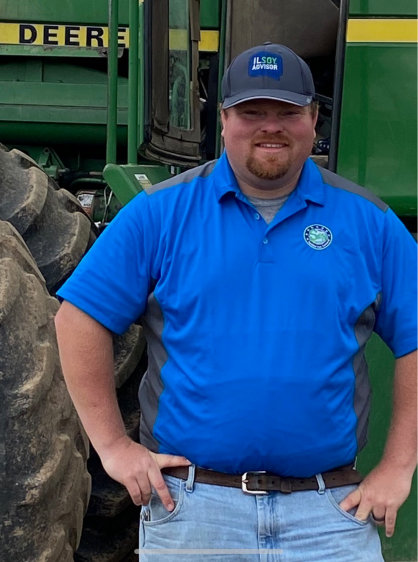ILSOYADVISOR POST
Practical Methods for Using Tissue Nutrient Analysis Results
We are just past the summer solstice and per the “crop” calendar, halfway through the year already. One activity that is often overlooked at this point in the year is evaluating the fertility programs’ performance and making adjustments, also known as tissue sampling. 
The GI/GO Principle applies:
The only way to receive good and usable results is to send in the correct tissue for the growth stage of the crop. I won’t go too deep into the procedure, but I will say that it does follow the GI/GO rule, Garbage in = Garbage out. Here’s a good resource that outlines how to take tissue samples effectively - Page 28.
Soil and tissue sampling are like linear equations...
It takes two points to make a line in a linear equation, but three to five points would be preferred. Think of fertility plans like that line. Tissue results are only ONE point on that line/trend. The more results from soil and tissue sampling, the more defined that line/trend becomes. No fertilizer applications should be made based on one tissue result because it’s only a snapshot. Multiple results over a brief period of time establish a trend that is useful, however. We would also like to see successive, sufficient results which would indicate the crop has proper levels of fertility heading in to grain fill.

Commitment of time and resources:
It is important to establish what we are looking for and where. The following chart outlines a few of the macro and micronutrients, how they are applied, their mobility and the plant uptake mechanism. These nutrients are where I suggest focusing efforts due to uptake cycle needs and widespread ability to apply product quickly via some form of foliar feed.

Tissue Sampling First Priorities:
1. Your top-producing field by Actual Production History (APH) - this is where your strength as a producer is being highlighted so you need to identify it.
2. Your second-best APH field - this is low hanging fruit and likely where your most productive dollar will be invested. You’ll want to take your second-best field and make it as good as the best.
3. For the field that struggles the most on APH and fertility, but you’re not sure why it’s struggling - use your judgement on this one. For example, if the river floods the field two out of every five years, then move on up the list of fields.
4. The field immediately above the previous one - if you can identify where it is trending backwards, you may be able to at least stop the trend, if not reverse it.
Focus on these four fields over a defined period of time.
This period does not have to be seasons or months. Pull some samples over the course 10 to 21 days or longer. Or before and after a major rain event. The more results over a wider interval of time, the better and more useful your trend will be.
Find multiple trusted advisors.
You may have a good sales rep at the co-op, but I promise, the law of incentives applies to everyone. Local agronomists or CCAs, universities, and the lab the results came from are all able to help you maximize what you learn from your results.
Farm Well! Be profitable!
Sources:
- Leif Wildman - ADM Location Manager - Newman, Illinois, Interview 6/25/21
- Rod Livesay - A Better Way To Farm, Conklin Affiliate. Interview 6/24/21
- Jon Woerner - Agronomist/Owner - Ag Answer Sullivan Illinois 6/25/21
- Tissue Sampling Considerations for Higher Yields (Todd Steinacher, ILSoyAdvisor)
- Midwest Labs Tissue Sampling Procedure





Comments
Add new comment